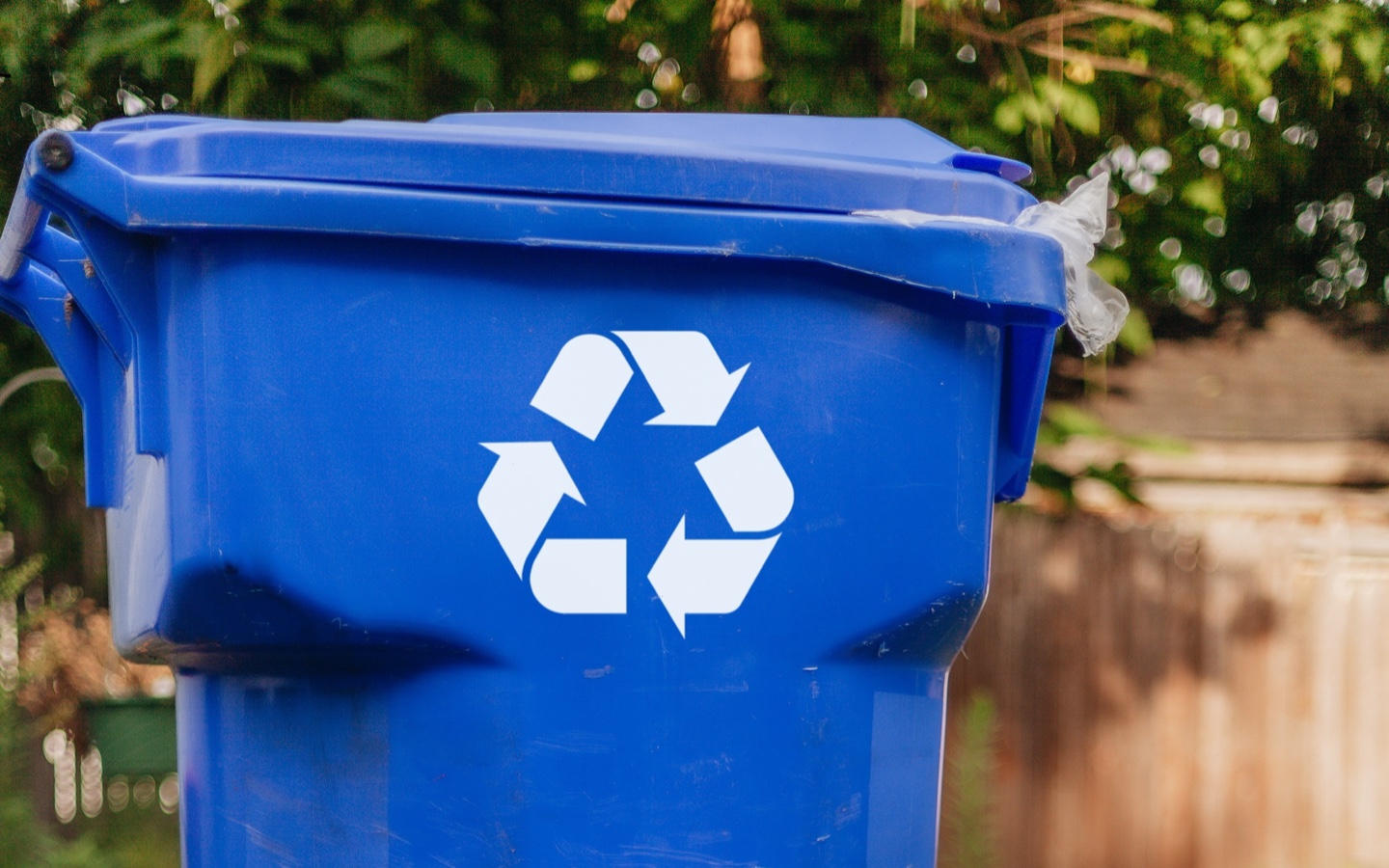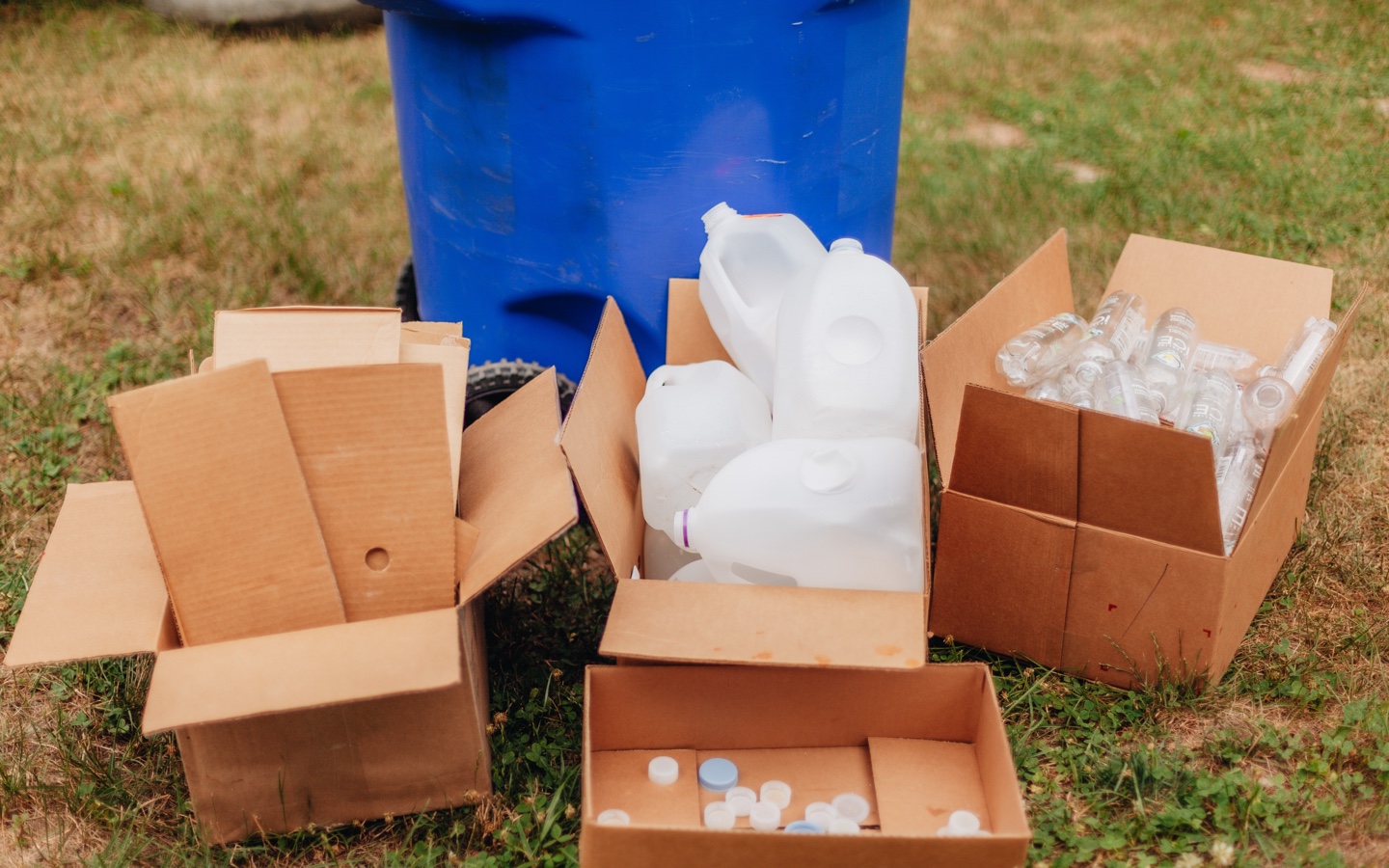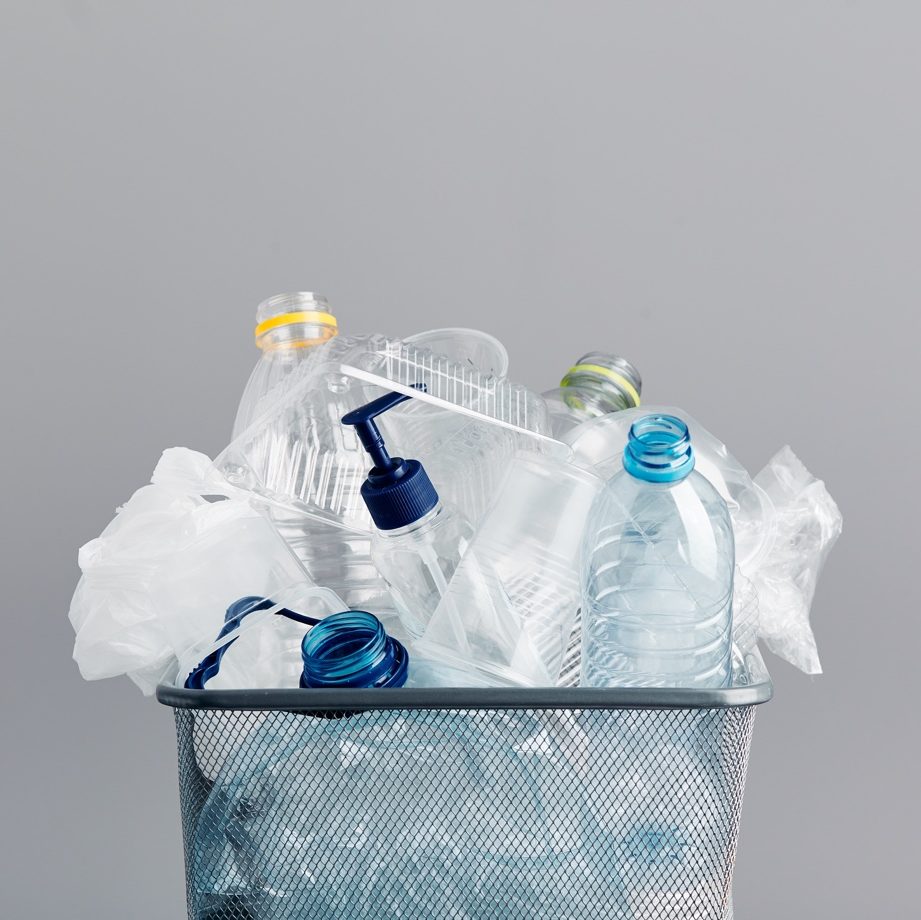Much of what we recycle either can’t actually be recycled or ends up in landfills. States like Maine and Oregon are hoping to fix our broken recycling system by putting more responsibility on the companies that make these products.
It’s 9 a.m. A noisy blue truck trundles down your street, carrying with it your week’s worth of packaging from canned vegetables, seltzers, berries. Do you know where your recycling is going?
Recycling in America started in the 1970s, and as of 2018, Americans recycled about 24 percent of the waste they generated. But it’s become clear in recent years that our recycling system is broken. Not everything we put into the blue bin gets recycled. And that little triangular arrow symbol? It doesn’t necessarily mean that item can be recycled.
If you’re finding all of this confusing and annoying, you’re not alone. The good news is, a number of states and advocacy groups are attempting to make our recycling system more transparent and effective by putting more of the financial burden on the companies that are manufacturing the stuff we recycle (or think we can) in the first place.
A recycling system, of course, has local variations, but it generally works like this: it’s a market with buyers who pay waste management companies for materials that they can turn into new products. But those buyers don’t want to deal with the work of sorting through and cleaning recycled products. Many buyers don’t even want all of the products we might consider recyclable, like those containing mixed materials (think clamshell-style food containers or juice boxes with mylar on the inside). They also reject many recyclables that haven’t been cleaned out properly because it’s harder to process those items. The value — and price — of recyclables can change as well, further limiting what companies decide to purchase from recycling facilities. Unlike glass and aluminum, which can be recycled indefinitely, plastics are also less desirable because they can only be recycled once or twice. (A 2017 study found that as little as nine percent of all plastic ever produced has actually been recycled.)

Read more: A Guide to Recycling Symbols
And because buyers only accept a limited number of recyclables — and many consumers believe they can still recycle anything that’s paper, plastic, or aluminum — waste management companies are often left to deal with large amounts of items that aren’t sellable. These materials can either be recycled or disposed of — but both options cost waste management companies money. And, more often than not, it’s cheaper to simply throw what’s left behind in the landfill or send it to incinerators. This cycle puts most of the financial pressure on municipalities and taxpayers, who are the ones that pay up when the cost of recycling goes up. There has never been a federal policy for recycling that would assist local waste management in improving the situation, though the EPA just announced a first-ever national strategy that may have concrete impacts down the line.
If that wasn’t evidence enough, in January 2018, China enacted a “National Sword” policy, banning the importation of plastics and other materials for recycling. Until then, the U.S. sent about 70 percent of its plastic waste to China and Hong Kong, which the country paid for and then turned into new products. Among the reasons given for refusing the waste was that it had created new environmental problems for China and dirty, hazardous, or non-recyclable materials were being included in the recyclables they paid for, further emphasizing just how urgently our recycling system needs to change.
“One of the things that we want to make sure people understand is that the manufacturer of consumer products and how these are managed all across the life cycle, from the mining upstream stage to the downstream post-consumer stage, contributes significantly to greenhouse gas impacts.”
The National Sword policy significantly increased the costs for recycling for municipalities in the U.S., according to CEO and founder of the Product Stewardship Institute Scott Cassel. “They’re faced with closing down programs or not collecting all materials or paying that extra cost. So that has created the political will,” he says, to put the responsibility back onto the manufacturers who are putting the plastic and other packaging products on the market in the first place.
One of the main ways this is done is through extended producer responsibility (EPR) laws, which have been around for a while. Essentially, EPR laws attach fees that manufacturers must pay based on factors like how much packaging they’re putting on the market, how recyclable that packaging is, and how much of it is made of post-consumer recycled materials. The manufacturers’ fees then go to the municipal operations to cover their waste management costs. This is critical, says Cassel, because manufacturers currently don’t feel much pressure to consider how recyclable their packaging is when designing it. “They’re not thinking about the cost for managing the end of that product or package’s life. They don’t have to incorporate it into their costs of doing business,” he says. There are currently 124 EPR laws in 33 states, in product categories that often involve difficult-to-recycle materials like mattresses and electronics. But in summer 2021, Maine and Oregon introduced big-deal EPR laws that target packaging, which makes up about 40 percent of the waste stream in the U.S.

Read more: A Guide to Recycling Properly
The law creates a “network of accountability,” as Cassel calls it, because not only must manufacturers think about what happens to their packaging when it’s disposed of, consumers will also get clearer information about what can be recycled and how. Similar laws in other countries have improved recycling rates; as Grist reported, South Korea’s rates doubled in the first 10 years of its EPR program. It can all add up to a system that effectively keeps as much waste as possible out of landfills and within the circular economy — a closed loop in which materials retain their use and value for as long as possible. “The money savings from these programs when they’re in place are in the hundreds of millions of dollars,” says Cassel.
More importantly, it’s a key element of mitigating climate change. “One of the things that we want to make sure people understand is that the manufacturer of consumer products and how these are managed all across the life cycle, from the mining upstream stage to the downstream post-consumer stage, contributes significantly to greenhouse gas impacts,” says Cassel.
And he says there is plenty of momentum for more EPR packaging laws. Currently, PSI is working directly or indirectly with about a dozen states, and we could see many similar laws in the next couple of years alone.
“The bottom line is that the governments on the leading edge are fed up with the increased costs over time, the financial and management burden that they have to bear,” he says. “They’re pushing back hard.”

Read more: How Freecycling Keeps Furniture Out of Landfills
Have feedback on our story? Email us at [email protected] to let us know what you think!

Shop Pillows
The Essential Organic Pillow Collection
Gentle, breathable, non-toxic support.




